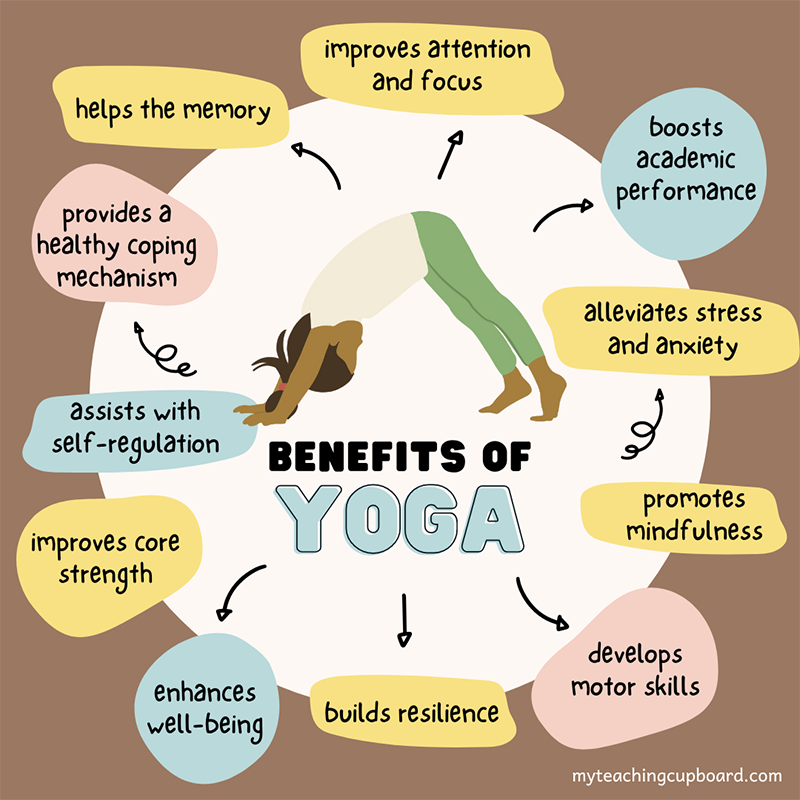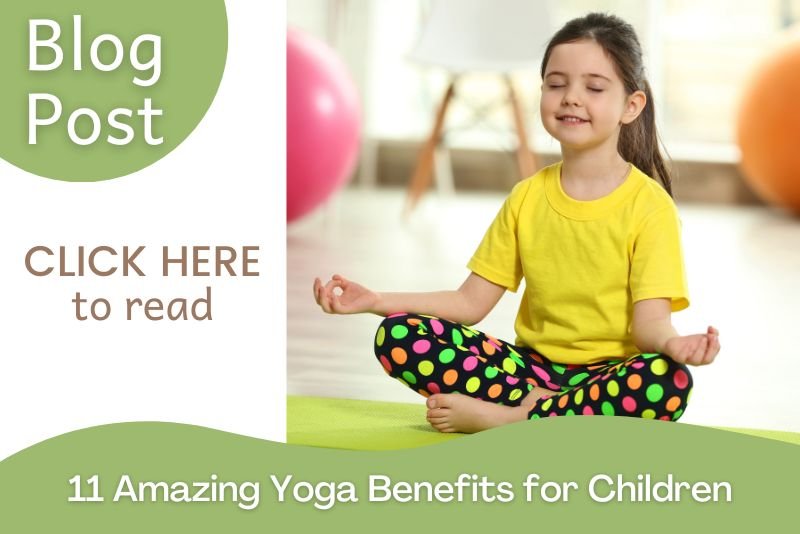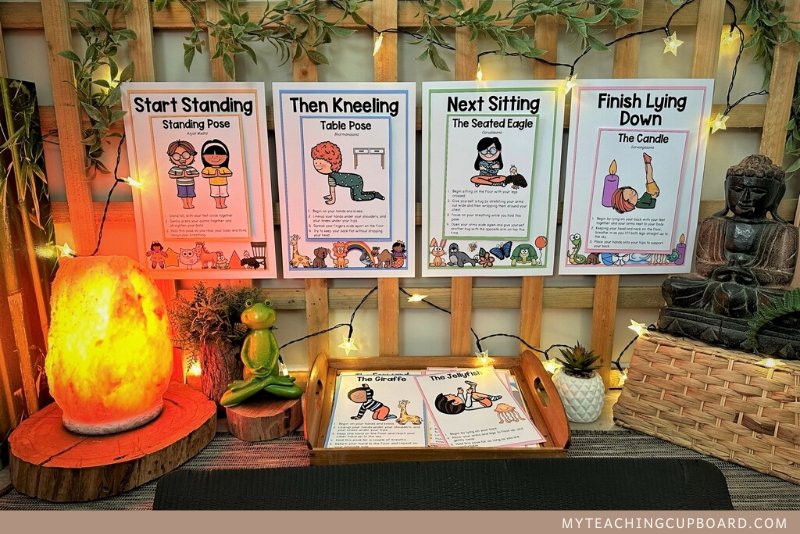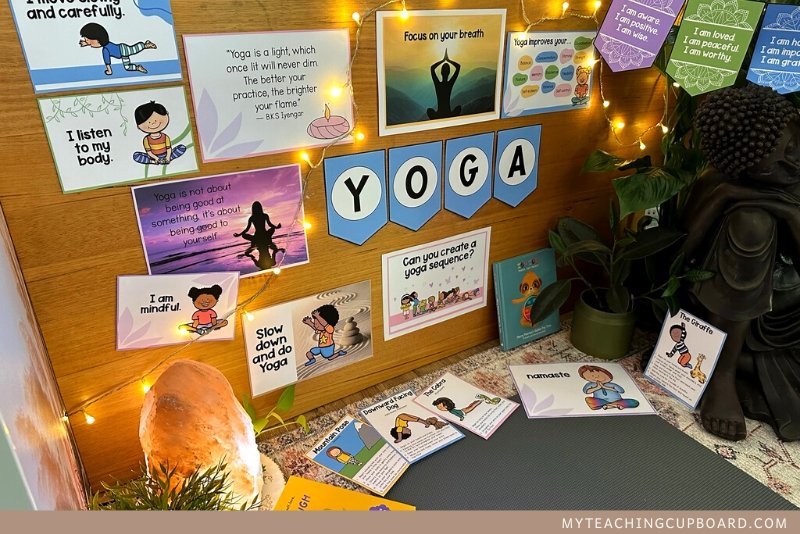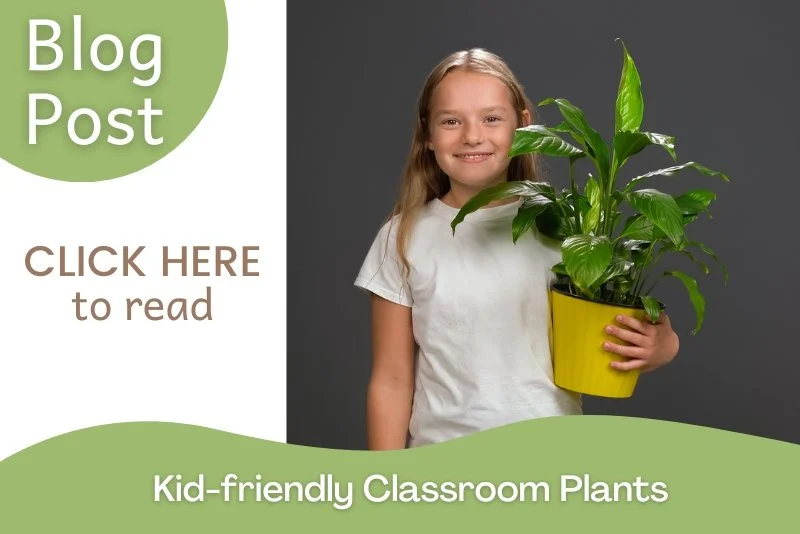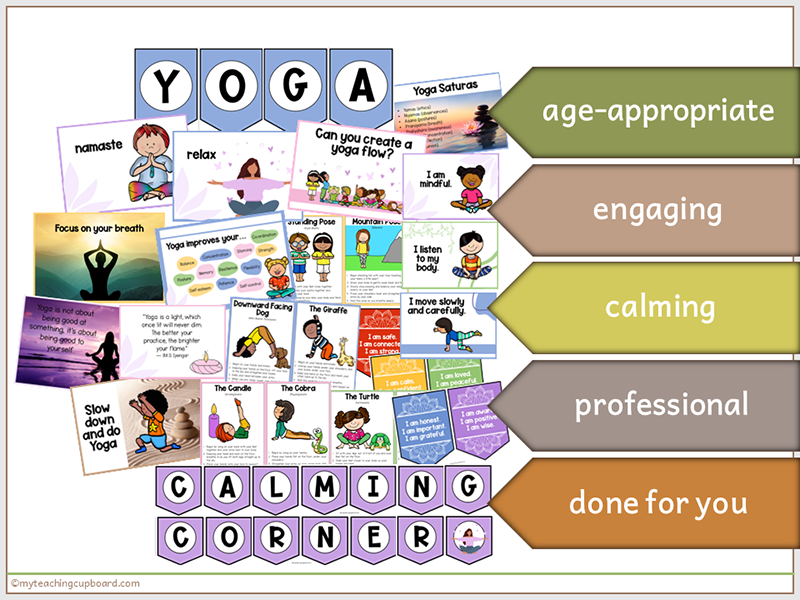Create a Calm Corner for Yoga in the Classroom
Are you interested in setting up a calm corner or starting yoga in the classroom? Yoga for students in the classroom has many benefits. If you want to get started with yoga to provide your children with a peaceful area to calm down and practice yoga and mindfulness, this blog post is for you.
In this blog post, I will show you the calm corner we created in our early years classroom and give you some practical tips and ideas for setting up your very own inviting classroom yoga area.
I’ll explain the benefits of having a classroom yoga space, and you’ll also discover how you can ensure you provide a safe and supportive environment for your students to practice yoga in the classroom.
We will explore the resources and props you might like to use when you create your classroom yoga area, and I’ll even give you some creative suggestions for naming this calming corner of your classroom.
I understand time constraints are a common concern for most kindergarten teachers. We all feel overwhelmed by our already packed schedules and all the curriculum expectations. If you have a mandated curriculum to follow like I do, it may seem challenging to find room for additional activities like yoga.
However, integrating yoga into the classroom can bring so many benefits to not only your students’ overall well-being but it can improve their academic performance too.
Why You Need a Classroom Yoga Space - The Benefits of Yoga in the Classroom
Yoga has numerous benefits for children. Research has found yoga can improve a child’s physical, emotional, and mental health, as well as promote self-awareness, concentration, and relaxation.
As you know, it’s all about best practices in the classroom, so I wanted to find out all the benefits of yoga for kids. There’s a lot of research available on yoga and the benefits of kid’s yoga. So if you are also wondering why yoga in the classroom is so important and how it can benefit the kids in your class, here’s what I found…
Kid’s Yoga can
improve attention and focus
help the memory
boost academic performance
alleviate stress and anxiety
build resilience
provide a healthy coping mechanism
improve core strength
develop motor skills
assist with self-regulation
promote mindfulness
enhance well-being
Need more information on the benefits and why you should be offering an opportunity for your students to practice yoga in your classroom, read this blog post: 11 Amazing Yoga Benefits for Children.
I have found that setting clear expectations for my students in our classroom yoga area has helped me to create a positive and focused learning area. When you establish clear guidelines and set boundaries for using this space, your students will understand how to use your yoga area safely and with purpose.
The number one rule in Classroom Management 101? Clear expectations!! Your students need to know what is expected of them regarding behaviour and participation. When your students are clear on your expectations, you’ll have a space where your students can fully immerse themselves in the yoga experience without any confusion or uncertainty.
Classroom Yoga Expectations
Here are 6 clear expectations you might like to set when you introduce your yoga classroom area:
Follow the Instructions: Encourage your students to look over the area for information and instructions. Request that they follow along with the poses and breathing exercises as best they can.
Respect others: Emphasise the importance of respecting others' space and avoiding any distracting or disruptive behaviour during their yoga practice.
Use a quiet voice: Yoga is a calming exercise, so encourage your students to use a quiet voice when they are in this area. Our goal is to create a calming corner so we want to make our classroom yoga area a calming and peaceful place.
Stay focused: Encourage your students to stay focused on their own yoga practice. Promote mindfulness and suggest the children avoid comparing themselves to their friends or getting distracted by what others are doing around them.
Take care of themselves: Put an emphasis on the importance of listening to their own bodies and taking breaks or modifying poses as needed. It is extremely important your students avoid any injury or discomfort.
Have fun: Remind your students that yoga should be fun and relaxing.
By setting clear expectations, you will help your students feel more comfortable and confident during their yoga practice. Creating a safe and supportive environment everyone can participate in is easier when you set clear expectations.
Classroom Yoga Risk Factors
It is crucial that you ensure your yoga area is a safe place in your classroom. Clear expectations will help you to do this, but it is also essential you keep your little yogis safe. It is important for all teachers to do a risk assessment.
Let's consider a few factors that could affect child safety:
Keeping on top of dirt, sweat, and any other biological materials that might come into contact with the other kids during yoga practice. We want to make sure everyone stays healthy and germ-free! If you are using shared yoga mats like I do, you might like to include some bacterial wipes in your area. The children can use them to clean their yoga mats before and after they use the area.
Yoga can be challenging, and we don't want our kids to over-exert themselves. Insist your students monitor their bodies to avoid any physical strain. Yoga in the classroom should not feel uncomfortable in any way.
Remember, some kids may have special needs or can be keen to engage in high-risk behaviours. Take extra care to understand your student’s individual needs and make sure you cater to them in your classroom yoga area. All your children should feel safe and included.
Sometimes, injuries might accidentally happen during yoga. Make sure you are on the lookout for any signs of discomfort or the incorrect execution of difficult poses.
We also have a duty of care as outlined by Yoga Australia. Here are some more important steps you need to take:
You must draw on your professional training and experience to monitor your classroom yoga area. Have clear expectations for use in place. Provide your students with guidance verbally and with visuals on how to use the area.
Don’t just set up the classroom yoga area and walk away. Make sure you monitor the area and keep an eye on the children using it. You might need to adjust exercises to match your students’ physical capabilities if they need extra support.
Safety first! Remove any furniture or other objects that could be hazardous in the classroom yoga space.
Before the first child enters your classroom yoga area, conduct a school-based risk assessment. Ensure every measure is in place to guarantee the safety of the children.
By conducting a risk assessment and understanding your duty of care, you can create a safe and secure environment where your little yogis can flourish and enjoy their yoga practice to the fullest.
How to Provide a Safe and Supportive Environment for Young Children to Practice Yoga
When you are thinking about setting up a yoga area in your classroom, you will want to create an inviting and supportive atmosphere. As early childhood educators, we know how important the learning environment is. For yoga to have the calming effect you are looking for, the first step is establishing a safe environment that invites your kids to calm down and use the area purposefully.
To make your space yoga-friendly, make sure the children have plenty of room to move around. Remove any obstacles that might get in their way.
Another important thing to consider is your role as an educator and your presence in the classroom. Make sure you are not only visible, but present and involved in their learning and experiences in the area too. Keeping an eye on what is going on and letting the children know you are interested will help them to stay focused.
Provide guidance and support to your students so they use the classroom yoga area to calm down and practice yoga breathing and poses.
Decorate your classroom yoga area with illustrated diagrams of different poses, kids’ yoga books, and visual safety reminders. Visuals will allow the children to practice the poses independently and with confidence.
Atmosphere plays a big part in creating a calm yoga corner. In order to create a calming and peaceful environment, you can include decorative props and resources in your classroom yoga space. Try soft lighting to create a soothing ambiance and make it easier for children to relax and concentrate.
You can also explore using aromatherapy to further enhance the calming effect. Consider using gentle scents such as lavender or chamomile to help the children feel more centered and focused during their yoga practice.
Try playing relaxing music and soften the area with a rug. These are all things that can help children relax and focus on their yoga practice.
There are more suggestions for resources and props you can use to create the perfect yoga space below.👇
Remember, by establishing a safe, welcoming, and engaging environment, you'll set the stage for a positive and beneficial yoga experience for the little ones in your care.
Classroom space limitations?
Some kindergarten classrooms may not have enough open space to comfortably set up a dedicated classroom yoga area. If you are faced with classroom space limitations, there are solutions you might like to explore.
Adapt your area and the poses for limited space: Modify the visual yoga poses and the props you provide to suit the available space in your classroom. Focus on seated or standing poses that require minimal movement or can be done within a smaller area. This way, even if there isn't a lot of open space, your kids can still engage in yoga practice without feeling cramped.
Use flexible seating arrangements: Rearrange the classroom furniture and get rid of any furniture rarely used. When I switched to flexible furniture in my tiny grade one classroom, I couldn’t believe how much extra space I had. Consider using flexible seating and learning options. Sometimes just rearranging the furniture can help you maximize the available space and help you to create a dedicated classroom yoga zone.
Partner with the teacher next door: Collaborate with other teachers who might be facing similar space constraints. Explore the possibility of sharing available spaces or using withdrawal rooms. This collaboration not only solves the space issue but also promotes a sense of community and cooperation among teachers and other students.
Virtual yoga sessions: In situations where physical space is extremely limited, consider incorporating online yoga sessions into your day. Integrate it with other areas of the curriculum instead of treating yoga as a separate activity. For example, do yoga movements and breathing exercises during transition times or as brain breaks between lessons.
This way, yoga becomes a natural extension of the daily routine. Use your big screen and your carpet area to participate in a pre-recorded kid’s yoga class. I highly recommend Cosmic Kids for young children. This way, your students can still participate in guided yoga practice without having a dedicated physical space in the classroom.
The focus should be on adapting and finding creative solutions that work within your given limitations. By being resourceful and flexible, you can ensure that yoga becomes a part of your classroom routine, regardless of any space constraints.
Classroom Yoga Area Resources
Yoga Space Consideration
You want to make sure you can accommodate kids of all shapes, sizes, and comfort levels. When designing your dedicated classroom yoga space, clearly define the maximum number of students the space can have with yoga mats. I purchased one adult-sized yoga mat and cut it in half. My space was designed for 2 children, which was perfect for our needs. Don’t want to purchase a yoga mat? Old bath towels make great mats, and they are easy to clean too. Just throw them in the washing machine whenever they get too dirty.
Minimise Noise in Your Classroom Yoga Area
There’s nothing worse than hearing screaming and laughing coming from your classroom yoga area. You can help to minimise the noise levels and keep your zone a calm and mindful place by using sound-absorbing materials and thoughtful design principles.
Rugs, mats, and cushions are wonderful soundproofing materials. Avoid curtains and low overhanging nets though. These embellishments create a lovely classroom aesthetic, but you don’t want your yogis getting caught up or tangled in your design props. Make sure that your tallest student has plenty of room to be able to reach their arms far up above their heads in any pose.
Create Privacy in Your Yoga Space
As they practice their yoga poses, most students will appreciate the opportunity to relax and not feel that they are being watched by everyone in the room. I like to set my area up in a corner of the room. When your classroom yoga area is set off to the side, you can still easily keep an eye on what’s happening, and the kids have some much-needed privacy.
Many children need a sense of security and a private place to calm down or engage in yoga. You probably have children with sensory processing differences. Some students are more sensitive to external stimuli like noise, visual distractions, or physical contact. Being in a private space helps reduce sensory overload and allows them to focus on their self-regulation. Calming activities like yoga can help them do this and help them feel less overwhelmed too.
A private classroom yoga area creates a safe space for children to manage their emotions. It allows them to process and express their feelings without fearing judgment or scrutiny from others. Engaging in yoga within a private area allows them to find solace, practice deep breathing, and engage in movements that promote relaxation and emotional well-being.
If you understand and honor the need for privacy when your kids are calming down or doing yoga, you should create inclusive and supportive environments. By providing a private, calm corner for yoga in the classroom, teachers can empower children to engage in self-care, develop coping strategies, and experience the benefits of yoga in a way that suits their unique needs.
Bright or Neutral Colours in a Classroom Yoga Area?
Colour plays a significant role in creating a calm and nurturing classroom environment. This includes the space you have dedicated to yoga. Colour can impact your students’ emotions and perceptions. Research on colour psychology tells us that different colours can evoke distinct feelings and moods. Understanding this can help you set up a classroom yoga space that promotes a calming atmosphere for your young students.
When it comes to colour choices, the Reggio Emilia Philosophy suggests embracing neutral tones to foster a sense of calmness and tranquillity in the classroom. Natural colours like soft beiges and warm earth tones can create a soothing ambiance that supports relaxation and focus during yoga practice. You can use colour to provide a neutral backdrop that doesn't overwhelm the senses and allows children to practice yoga without visual distractions.
Incorporating neutral-toned colours doesn't mean your yoga space has to be dull or boring. You can add visual interest and variety by incorporating different shades and textures within a neutral or pastel colour palette.
Remember, while colour does play a role in setting the mood, it is more important to create a nurturing and engaging yoga experience through thoughtful instruction, supportive interactions, and age-appropriate activities.
By combining the calming effect of neutral colours with effective teaching strategies, you can create a yoga space that supports the holistic development and well-being of your young students.
Using Music for Yoga in the Classroom
Incorporating music into a classroom yoga area can really enhance the overall experience. If you are interested in adding some music to your space, choose instrumental or soothing music without lyrics so your students can focus on their breath, movements, and inner awareness during their yoga practice.
Instrumental music with gentle melodies and rhythmic patterns help to create a calming and meditative feeling. Soft nature sounds or gentle instrumental tracks inspired by nature might be an option too. It's essential to select music with a slow tempo to support a slower and more mindful pace of movement. Experiment with different genres such as classical, ambient, or New Age music to find what resonates best with your students.
Make sure the volume is kept down low. You don’t want it to overpower the practice. It should be there as a type of soothing background that complements your kids’ yoga experiences.
Using Classroom Plants in a Yoga Area
Plants, plants, and more plants! You can never have enough.
Plants add natural beauty and are so aesthetically appealing. If you want to make your classroom yoga area more visually appealing and inviting, just add a plant. They aren’t just for your yoga space either. Classroom plants will help you to create an overall pleasant and welcoming atmosphere for both you and your students.
If you are wondering which plants are child-friendly options, make sure to check out this blog post: Kid-Friendly Classroom Plants
I spent quite some time one weekend researching this topic and compiled an illustrated list of child-safe classroom plants in this blog post. I even included some growing tips too. Please make sure the plants you choose for your classroom are properly identified. Some indoor plants have many different names so do a little research and be sure of the kind of plant you have.
Remember to select low-maintenance plants that are suitable for indoor conditions and consider any potential allergies or sensitivities your students might have. Creating a greener and more natural learning environment by adding plants is a simple yet impactful way to enhance the well-being, focus, and creativity of students in the classroom but as always, you want to do it safely.
Classroom Yoga Props
It’s important to have yoga mats or some type of comfortable flooring. There are so many props you can add, but it is best to keep your decor to a minimum. The less cluttered the space is, the more room you will have for your students to safely practice their poses and the safer the area will be.
I can’t resist the classic Buddha statue and a salt lamp though. If you are interested in setting up a beautiful calming classroom yoga area, make sure you purchase my Yoga Investigation Pack.
You will be able to transform your classroom into a peaceful oasis with these Yoga Corner Resources! I designed them with early years teachers in mind. This classroom yoga resource has everything you need to create a calming and inviting space for your students to practice yoga and mindfulness.
Included in this pack are printable posters and signs to help guide your students through their yoga practice, and it includes basic poses and breathing exercises too.
And because aesthetics are important, I’ve also included some neutral-toned engaging visuals to help you decorate your yoga corner. There are even some printable bunting, banners, and inspirational quotes to inspire and motivate your students.
Whether you're a seasoned yogi or new to the practice, these resources are perfect for introducing your students to the benefits of yoga and mindfulness.
Using Scents in Your Classroom Yoga Area
Many teachers like to use scents and use an essential oil diffuser in their classrooms. While essential oils can provide a calming and soothing atmosphere, it's important for teachers to exercise caution when using them in the classroom. Some essential oils can be potentially harmful, especially if children have allergies or sensitivities.
Which essential oils are safe to use in a classroom, and which ones should a teacher avoid?
Here are some essential oils that are generally considered safe for use in a classroom and some others that you may want to avoid:
Safe Classroom Essential Oils:
Lavender: This oil is known for its calming and relaxing properties, and can help promote a peaceful atmosphere in the classroom. I have had a child in my classroom that was allergic to lavender. Even though this oil is marketed as being safe for children, always think about the individual students and their particular sensitivities.
Lemon: This oil is uplifting and refreshing, and can help improve focus and concentration.
Peppermint: This oil is energizing and invigorating, and can help stimulate the mind and body.
Sweet Orange: This oil is bright and cheerful, and can help promote a positive and optimistic mood.
Classroom Essential Oils to Avoid:
Eucalyptus: This oil can be too strong and overpowering for young children and may cause respiratory irritation.
Cinnamon: This oil can be too potent and may cause skin irritation or allergic reactions.
Clove: This oil can be too strong and may cause skin irritation or allergic reactions.
Wintergreen: This oil can be too strong and may cause skin irritation or allergic reactions.
It's important to stress here that every child is unique, and some children may be more sensitive to certain essential oils than others. Teachers should always dilute essential oils properly, use them in small amounts, and monitor children for any signs of discomfort or allergic reactions. If in doubt, it's always best to consult with a medical professional or a qualified aromatherapist before using any essential oils in your classroom.
Now you have all the information you need to get a calm corner organised and set up for your children to practice yoga in the classroom, you just need to decide what you are going to call this space.
Peaceful Names for A Classroom Yoga Corner
Teachers might refer to a yoga learning area in the classroom as a yoga corner, yoga station, yoga area, or calm down space. You might like a more creative name, like the serenity space, or the mindful movement zone.
The name you choose depends on the particular approach to yoga and mindfulness you are wanting to encourage. The name of your classroom yoga area will also be influenced by the age of your students and your overall classroom environment.
Here are some peaceful and calming suggestions for your dedicated yoga practice area:
Relaxation Retreat
Zen Den
Peaceful Pad
Mindful Movement Zone
Om Spot
Tranquility Corner
Serenity Studio
Yoga Oasis
Breathe Easy Bay
Chill Zone
Namaste Nook
Balance Zone
Lotus Lounge
Inner Peace Place
Stretch Station
Conclusion
In conclusion, setting up a calm corner for yoga in your classroom can have numerous benefits for both your students' well-being and their academic performance. By providing a safe and supportive environment, you can create a space where children can practice yoga, improve their focus, reduce stress, and develop important skills like self-regulation and mindfulness.
So if you are ready to create a serene and mindful space in your classroom, don’t forget to download my Yoga Corner Resources. This comprehensive pack has everything you need, from printable posters and engaging visuals to inspirational quotes and illustrated yoga pose cards. Get started with yoga in your classroom and start reaping the benefits yoga and mindfulness can provide to your early childhood students today!
Please consider sharing this blog post with other educators so they know how to set up a calm corner for yoga in their classroom too.
Just CLICK the sharing box below.👇


